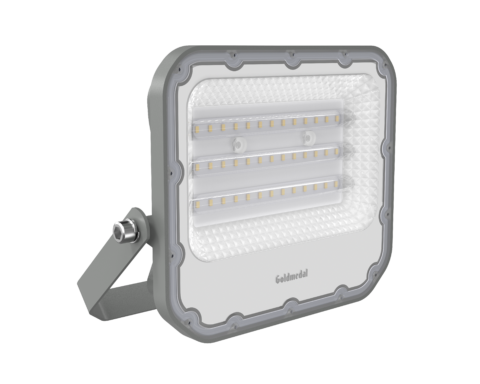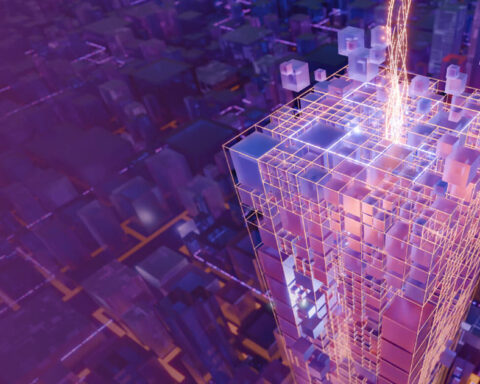Evolving technologies are changing the way buildings are managed and have become a crucial part of running a successful and efficient venue, for instance for sports events. Large venues, usually with high seating capacities and a variety of equipment, may face critical issues such as overcrowding, equipment failure, or other incidents. To address these challenges, many stadiums or venues are seeking new, smart solutions that can support venue operators to stay on top of real-time situations dynamically on digital-driven platforms, and to achieve more efficient and sustainable venue management.
Hikvision has worked with several venues in Hangzhou, China that will be hosting the Asian Games in 2023. This involved building ‘Digital Twins’ of the three main venues that accurately and virtually represent the physical space, allowing venue operators to simulate changes or scenarios in real time, and empower them with the dynamic insight to act quickly to make the whole site, and the Games, run smoothly.
Smart venues for smart games
The Hangzhou Olympic Sports Centre Gymnasium, Aquatic Sports Arena and Training Hall are not only stylish, but also equipped with innovative technologies. These three new venues, driven by a digital operations platform, are the main venues for the Asian Games.
These three venues, covering a total construction area of 582,000 square meters, have large capacity, diverse functions, and complex equipment. In light of the challenges posed by these features, Hikvision has provided a digital operations platform for smart venues. By leveraging the Internet of Things, cloud computing,
BIM (Building Information Modeling) and other technologies, the platform can help improve the venues’ operational efficiency and effectiveness, through which working staffs can carry out intelligent management, scheduling, and operation and maintenance of the venues without leaving the Intelligent Operation and
Maintenance Command Centre.
The “digital twins” of the venues
The virtual venues (or the digital twins of the venues) are created by applying 3D modeling technology to represent and reflect the real ones. With this virtual representation, operational personnel can be well informed of different
situations, including security, traffic, operations of equipment and facilities, environmental conditions, and energy consumption, at all times and across the venues, thereby detecting problems in time and assigning the nearest personnel to solve the problem.
Dynamic integration of operation data
Based on IoT perception technologies, the platform integrates data from 14 subsystems across the venues, such as electromechanical systems and intelligent systems. Various indicators of the venues, including people flow, vehicular traffic, energy consumption, and activity data, are visualized on one screen, keeping staff informed of any changes at any time and helping them to better direct and arrange works.
This is a welcome change to staff, who previously relied on multiple, separate systems and communications methods to manage the whole site. This was time- consuming and cumbersome, adding to their stress and potentially leading to things missed.
Virtual patrol to guard remotely
Thanks to a remote patrol inspection solution, the venues’ inspectors can virtually “walk” around the venues freely. In the virtual venues, they can “go straight” or “make a turn”, just like in a 3D game. During their remote patrol inspection, inspectors can retrieve images from cameras installed along the route to understand the real situation in real time, largely improving the efficiency compared with traditional onsite patrol inspection.
Heat map shows real-time people flow
The heat map shows the density of people in different locations by colors, giving obvious indication to readers about how many people are in one certain location. For example, an area in red indicates that the area is crowded with people, and coordinators should properly evacuate those people.
Automatic early warning for equipment failure
A variety of equipment in the venues makes facility management difficult. To ease operations, the platform sends alarms through the 3D model once a device connected to the platform fails. These devices include equipment and facility modules, cold and heat source systems, and UPS devices. In this way, operation and maintenance personnel can receive alarms in a timely manner and solve problems immediately.
Real-time energy consumption data
The platform includes a module for the venues’ energy consumption management, through which the staff can easily understand how much water or electricity is consumed, both in real time and in trends. It can also provide
information on how much energy is used in different areas and floors. In case of abnormal energy consumption, the platform will send a timely warning to relevant personnel, informing them to check and address problems.
Controlling lights throughout the site with one click
The exteriors of the venues are covered with 12,000 LED point light sources to feature different lighting effects at night, such as festival mode, daily mode, power saving mode, and match mode. The platform enables staff to remotely control the indoor and outdoor lights, making it possible to deliver artistically light shows in an energy efficient manner.
These solutions enable integrated and efficient venue management, keeping up with the latest situations in the venues. They ensure that staff lose no time in responding to issues, reducing workloads, as well as promoting energy saving.
The digital operations platform for the three main venues delivered by Hikvision will support the operation and management of the venues during and after the Asian Games. Its flexible, scalable model means it can continue to serve the venues’ logistic, operation and maintenance, and event management personnel into the future.






